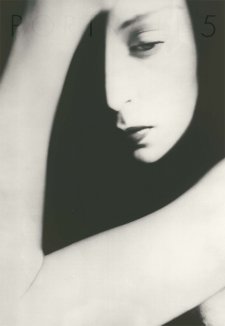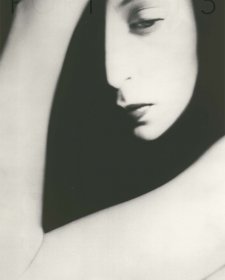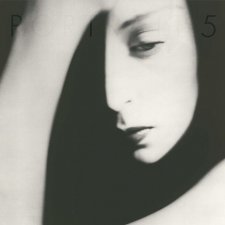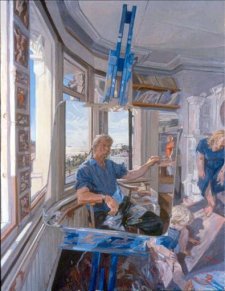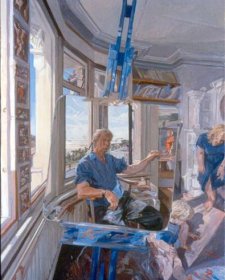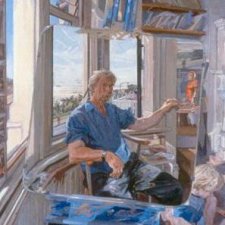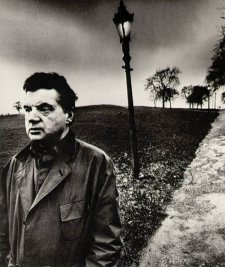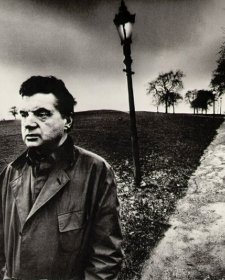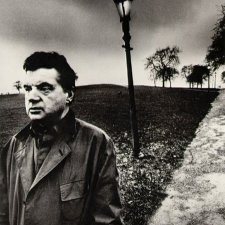Polly Borland's portraits are like conversations. Capturing a moment of engagement with her sitters, where the eye contact is direct, she invites us to share the encounter. We are allowed to imagine ourselves the photographer.
This come-hither photograph of popstar Kylie Minogue was purchased by the National Portrait Gallery in 2000. It is appropriate that Kylie is represented in the collection by a photograph. Photography is the medium of celebrity and there is no doubting Kylie is a celebrity. Still more fitting is the manner in which she has been photographed. Gazing out from a pool of pink satin she is portrayed in a fashion so many stars before her have been. Even if the look is conscious of its predecessors and perhaps borders on parody, it is a timeless image. It is not bound to any one of the many image changes Kylie has undergone to ensure the momentum of her career.
A momentum Kylie recently affirmed with a series of sell-out concerts in Sydney and Melbourne this August. With fans ranging from teeny-boppers, to 30-somethings who have followed her career from the beginning, Kylie's appeal is one that endures.
Borland is mindful of the fact that the more famous a sitter has become, the more limited is the photographer's approach. She overcomes this difficulty by applying her own bold stylistic stamp –vivid colour. In this portrait she manipulates lighting, composition and depth of field to give Kylie's figure a somewhat enigmatic presence. In doing so, Borland introduces something different and unexpected to the often superficial art of celebrity photography.
Part of the appeal of photographs of celebrities is that they tap into a desire to infiltrate the world of glamour. Borland's particular potency lies in her ability to relate to her sitters. She saw Kylie as resembling a little doll and wanted to capture a sense of vulnerability. Borland acknowledges that portrait photography is largely voyeuristic, but adds that it also involves 'respect, relationships and commitment to the subject and not just grabbing what you can for yourself'.
This collaborative attitude may partly explain why she is one of Britain's most lauded editorial photographers with work appearing in Vogue, Elle, Vanity Fair and The New Yorker.
Born in Melbourne in 1959, Borland studied photography at Prahan College before embarking on a career as a fashion photographer. A desire for more professional and creative opportunities saw her move to London in 1989. Although she has lived in Britain for more than a decade, she still sees herself essentially as Australian and visits often, claiming, 'being Australian is mostly about feeling Australian more than anything'.
